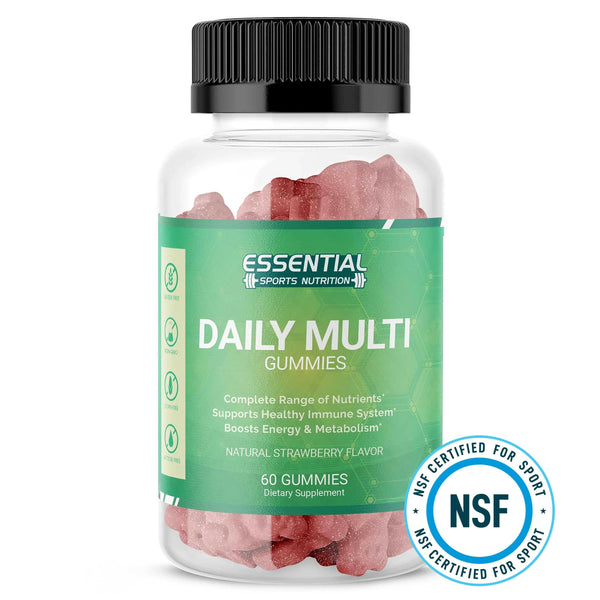Ultimate Guide for Rucking for Weight Loss and Physique Transformation
Rucking is a potent way to lose weight by walking with a weighted backpack. Walking turns into a full-body workout, engaging multiple muscle groups and markedly increasing calorie burn—up to 1000 calories per hour. This low-impact activity strengthens muscles, improves cardiovascular health, and reduces joint stress. Start by using a quality backpack with a light load, progressively increasing the weight as your fitness improves. Walking at 15 minutes per mile and rucking 1-2 times weekly can be beneficial. Invest in good gear, maintain proper posture, and stay hydrated for effective results. Discover the holistic benefits and success stories of rucking.

Key Takeaways
- Rucking burns 500-1000 calories per hour, enhancing weight loss.
- It combines cardio with resistance training for comprehensive fitness.
- The low-impact nature reduces joint stress while promoting calorie burn.
- Gradually increasing weight and duration optimizes weight loss results.
- Real-life success stories highlight rucking's effectiveness for fitness and weight management.
What Is Rucking?
Rucking is a form of exercise where you walk while carrying a weighted backpack, greatly boosting the resistance and intensity of your workout. This added weight transforms a simple walk into a demanding exercise that engages multiple muscle groups. When you participate in rucking, your legs, core, and upper body all contribute to managing the additional load, making it a thorough exercise.
The resistance provided by the weighted backpack turns walking into a full-body workout. As your legs propel you forward, your core stabilizes your body, and your upper body supports the weight, all muscle groups work in unison. This simultaneous engagement leads to enhanced muscle toning and strengthening.
Rucking notably increases your calorie burn. The added resistance requires more energy expenditure than traditional walking, making it an effective method for weight loss. The continuous movement while bearing the weight demands a higher metabolic rate, which in turn accelerates calorie consumption.
In essence, rucking combines the simplicity of walking with the intensity of resistance training. It's a scientifically-backed method that offers a thorough workout, promoting muscle toning and weight loss through increased calorie burn.
Benefits of Rucking

Engaging in rucking can greatly accelerate your weight loss journey by burning between 500-1000 calories per hour when carrying a backpack weighing 10-20% of your body weight. This significant calorie burn is integral to any effective weight loss program. Rucking for weight loss not only aids in burning body fat but also incorporates resistance training, which helps build muscle in key areas like your legs, back, and core. This muscle development boosts your metabolism, enhancing your ability to lose weight.
The low-impact nature of rucking makes it an excellent exercise for individuals of various fitness levels. Compared to high-impact activities like running, rucking reduces stress on joints. This means you can consistently engage in a rucking regimen without risking injury, improving overall adherence to your weight loss program.
Additionally, rucking offers a full-body workout that enhances cardiovascular health. By continuously challenging your heart and lungs, rucking helps improve cardiovascular endurance. This multifaceted approach makes rucking an ideal exercise for burning calories and improving your overall fitness. Incorporating rucking into your routine can provide a holistic approach to weight loss and physical health.
How to Start Rucking to Get in Shape
To start your rucking journey, invest in a quality backpack and gradually introduce weight increments to guarantee a safe and effective start. Begin with a light load, around 10% of your body weight, to acclimate your muscles and prevent injury. Aim to walk at a pace of approximately 15 minutes per mile, a vital intensity that optimizes calorie burn and cardiovascular fitness.
Initially, ruck 1-2 times per week to build endurance. As your body adapts, incrementally increase the weight in your backpack and the duration of your rucks. This progressive overload principle is essential for continuous improvement and effective weight loss. Scientific evidence suggests that rucking can burn up to three times more calories than standard walking, greatly contributing to your weight loss goals.
Incorporate bodyweight exercises such as squats and lunges into your routine to enhance muscle engagement and overall fitness. These exercises target key muscle groups, including your legs, core, and back, further boosting your calorie expenditure and muscle strength. By following these guidelines, you'll lose weight and build a resilient, well-conditioned body. This beginner's guide ensures a structured, evidence-based approach to rucking for weight loss.
Tips for Rucking Success

Investing in quality rucking gear and following a structured plan will greatly enhance your success and efficiency in achieving weight loss through rucking. Begin by selecting a well-fitting backpack and proper footwear. These investments are vital for comfort and durability, reducing the risk of blisters and musculoskeletal issues. Gradually increase weight and duration to avoid overexertion and injuries. Start with a manageable load and incrementally add more, allowing your body to adapt.
Staying hydrated is essential. Drink water before, during, and after your rucking sessions to maintain peak performance and support metabolic processes that aid in weight loss. Maintaining good posture and proper form is critical for maximizing calorie burn and muscle engagement. Keep your back and your shoulders straight, and engage your core to distribute weight evenly and prevent strain.
Set realistic goals and track progress to maintain motivation and consistency. Use a journal or app to log your rucking distances, weights, and times. This tracking will help you monitor improvements and stay committed to your weight loss journey. Adhering to these evidence-based tips will enhance your rucking experience and help you achieve your weight loss objectives more effectively.
Rucking Success Stories

Many real-life accounts vividly illustrate the profound weight loss and fitness transformations achieved through consistent rucking. These rucking success stories often highlight this activity's effectiveness for weight management and overall fitness improvements. For instance, participants in GORUCK events frequently share their personal transformations, detailing significant weight loss and enhanced physical endurance.
Incorporating rucking into daily routines has been a practical and enjoyable method for many. People report losing substantial amounts of weight over periods ranging from several months to a year. These success stories are grounded in evidence; individuals typically describe starting with manageable weights and gradually increasing their load, which leads to steady fitness improvements.
Such significant results underscore the practicality of rucking. It's not just about the physical benefits; the mental resilience gained from conquering challenging terrains with weighted packs also inspires others. These stories are powerful motivators, demonstrating that rucking can seamlessly integrate into everyday life and produce remarkable health benefits.
Conclusion

To wrap things up, rucking is a powerful tool in your weight loss arsenal. It's more than just walking with a weighted backpack; it's a full-body workout that burns calories and builds strength. You can hit the ground running with the right approach and see significant results. Remember, every journey starts with a single step, so lace up those boots and move. Your success story is just around the corner, backed by science and real-world evidence.
Benefits of Rucking for Weight Loss FAQs
Q: What is rucking?
A: Rucking is the activity of walking with added weight, typically in a backpack known as a rucksack, to increase calorie burn and build endurance.
Q: How can rucking contribute to weight loss?
A: Rucking can help with weight loss by increasing the calories burned during a walking session compared to regular walking without added weight.
Q: Is rucking a good way to build muscle?
A: Yes, rucking can help build muscle, particularly in the legs, back, and core, due to the added weight carried during the activity.
Q: How do I get started with rucking?
A: To start rucking, you need only a sturdy backpack or rucksack, and some added weight, such as books or water bottles. Begin with shorter distances and gradually increase both distance and weight as you build endurance.
Q: Are there any specific rucking gear or equipment needed?
A: While a good quality rucksack is essential for rucking, you can start with items you already have at home to add weight. Some ruck-specific gear like weighted vests or ruck plates can enhance the experience but are not necessary to begin rucking.
Q: How does rucking compare to other forms of cardio for weight loss?
A: Rucking is a low-impact cardio exercise that can be less strenuous on the joints than running. It offers a unique combination of cardio, strength training, and calorie burn, making it an effective option for weight loss.
Q: How Effective Is Rucking for Weight Loss?
A: Rucking efficiently burns 500-1000 calories per hour, strengthening muscles and boosting metabolism. It reduces stress and has a low impact on joints, making it a sustainable, accessible exercise for weight loss that is suitable for all fitness levels.
Q: How Long Should I Ruck per Day?
A: You'll benefit from at least 30 minutes of rucking daily. Studies indicate that consistent, moderate-intensity exercise like rucking can boost weight loss by up to 1-2 pounds per week. Adjust based on your goals and capabilities.
Q: How Far Should I Ruck as a Beginner?
A: As a beginner, you should ruck 1-3 miles to build endurance and prevent overexertion. Incrementally increase your distance by 0.5-1 mile weekly, rucking 2-3 times per week while listening to your body's feedback.
Q: How Does Rucking Change Your Body?
A: When you ruck, you kill two birds with one stone. You strengthen muscles in your back, core, legs, and glutes. This resistance exercise boosts metabolism, enhances cardiovascular health, improves posture, and increases muscle mass over time.























